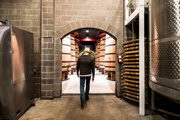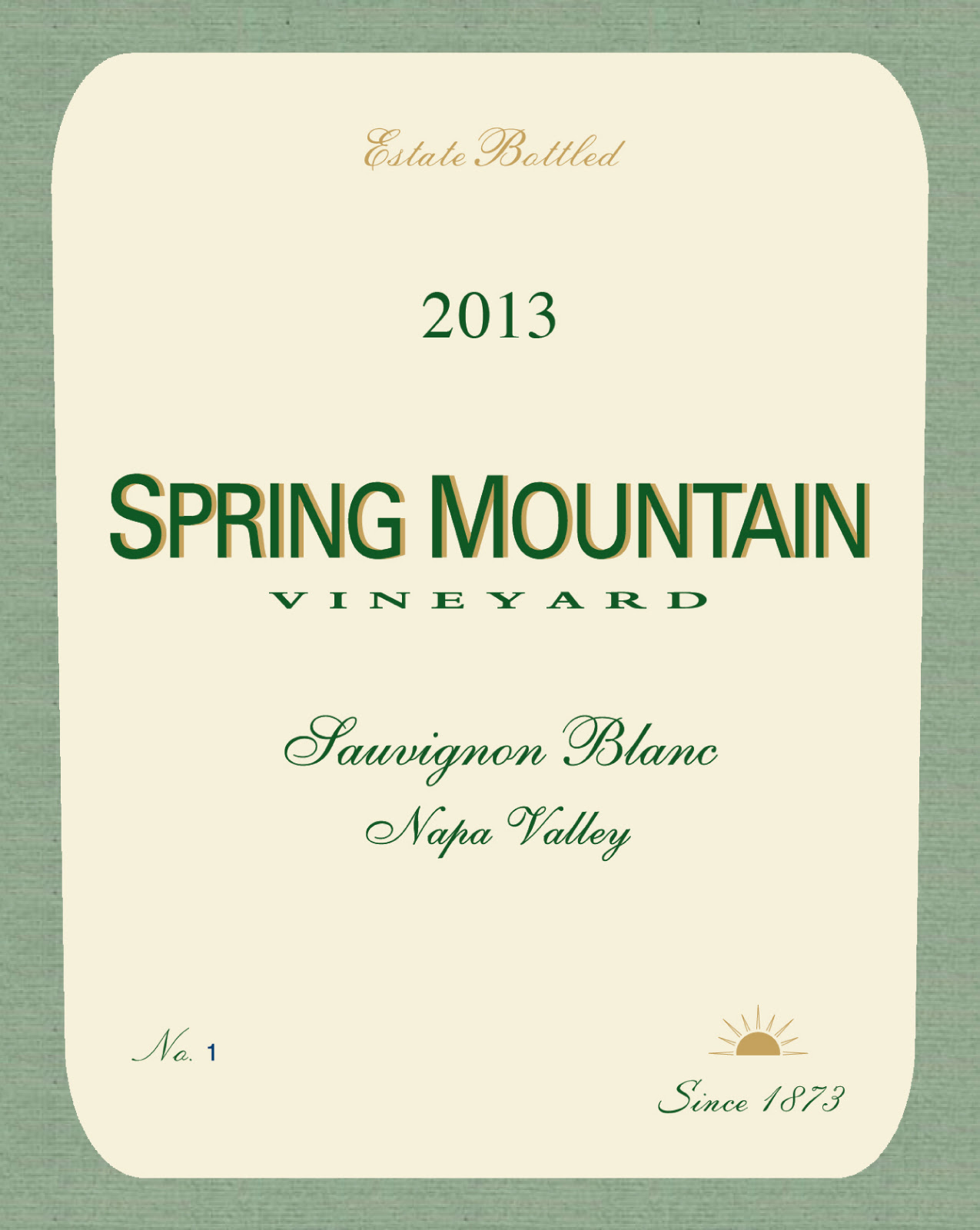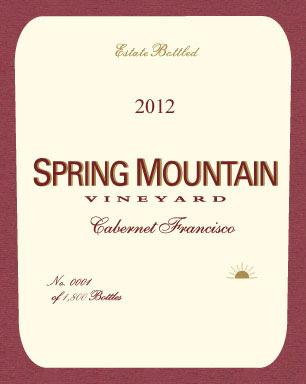Category Archives: Wine 101

2015 Bordeaux First Impressions
2015: the dawn of a great vintage…
Located on the 45th parallel, the northern limit for the world’s great red wine regions, Bordeaux likes sunny summers to produce great vintages. The months of May, June, and July 2015 were among the hottest and driest on record. Water stress, so important for stopping vegetative growth and starting the ripening process, took place early, in July, and brought on a magnificent véraison (colour change) in early August. I have not seen such an early, even véraison since 2009. All our grapes
Fortunately, the month of August was less hot and more wet, which gave a certain vigor to the vines.
Drywhitewines
This month of August enabled the grapes, especially the white wine grapes, to “breathe” and retain their freshness. The first grapes were picked at the end August. Their juices were superb and the weather forecast for the next two weeks is looking excellent… We are thus quite confident this will be a great year!!!
Redwines
The Merlot grapes will be harvested the last ten days of September and the Cabernets the first two weeks of October. These are showing magnificent potential, but we still need six weeks without a major disturbance.
Sweet whitewines
The Sémillon and Sauvignon Blanc grapes are slowly reaching perfect ripeness. As with every vintage, botrytis will call all the shots, but the conditions conducive to its development are all there.
It has been several years since Bordeaux has seen the dawn of such a beautiful vintage…
There are still a few weeks of suspense left before this promise is fulfilled.
Article by Union des Grand Cru Bordeaux
SPRING MOUNTAIN VINEYARDS
|

2015 VinCE WINE FESTIVAL BUDAPEST HUNGARY

CONCHA Y TORO GRAND RESERVA
On Febuaray 27th, 2015 I had the opportunity to have lunch with Grand Reserve head wine maker Marcio Ramirez. Marcio explained the reasons why the Grand Reserve a riverbank series of wines were so special. Marcio explain that the wines come from 3 very unique rivers beds Rapel, Cachapoal, and Tinguiririca which provides very distinct and different qualities to each wine. All the Gran Reserva series wines start with the triple Marine Mediterranean advantage.
* Areas which have a cool breeze close to the coast,
* Areas with a temperature between cold ocean air and warm air current from the valley combine to produce cooling winds.
* Ancient river banks or oil, mineral rich free draining and unfertile.
Marcio has been the wine maker at Concha Y Toro since he graduated from Universidad de Chile in 1997 degree in Oenology, he is a well-traveled and a well educated winemaker spending time in Bordeaux, Napa Valley, Mendoza, Spain St Emilion Pomerol District. We Tasted through several of the Gran Reserva series.
The Gran Reserva series Sauvignon Blanc 2014, was well rounded on the palate with a long lingering finish.
The Gran Reserva 2013 Chardonnay was golden in color, ripe pineapple fruit, balanced acidity and just a lovely wine.
Gran Reserva 2011 Carmenere displayed a deep ruby color blackberry/ blueberry fruit with a hint of chocolate on the palate, a well structured complex wine. Also in my opinion the best wine of the luncheon .
The Gran Reserva Malbec 2012 and 13 were deep ruby in color, the fruit comes from the river bed area Tinguiririca which is layered in red clay, I thought it was a very good expression of a very good Malbec.
Last was the Gran Reserva Cabernet Sauvignon 2013 and 14 these wines were very young but the 2014 has signs of being a star because of its complexity and structure, finished with well rounded firm tannin.
Contributing editor Alyssa Alvarez, @Tipsygypsea
THE WORLD NEXT BIG WINE REGIONS

Tokaj, Hungary
As Eastern Europe’s class act for wine, the historic Tokaj region is getting a €330 million (&374 million) investment over the next five years to upgrade its vineyards and bolster its reputation. (Under communism, quantity was prized over quality.) Its 5,500 hectares of vineyards, at an 800-foot elevation on volcanic slopes, are devoted primarily to three native white grapes. They include hard-to-pronounce Hárslevelü and flagship furmint, which is the key varietal in the luscious sweet wines associated with the region. The latest craze, though, is a newly available dry version of furmint, Hungary’s alternative to chardonnay and riesling.
Try This Now: 2011 Istvan Szepsy Betsek Furmint ($75). Smoky, citrusy, rich, and complex, it reminds me of a great Alsace riesling.

Virginia
Thomas Jefferson grew grapes in the state but failed to make great wines. Still, the modern era (starting in the 1970s) has drawn more than 240 determined vintners, including Donald Trump and AOL co-founder Steve Case. In 2014, they sold a total of half a million cases and seem now to be at the tipping point. Of the eight whites (chardonnay, sauvignon blanc, riesling, and several more), the most promising is viognier, but the best wines so far are the Bordeaux-style red blends made from cabernet sauvignon, cabernet franc, merlot, and petit verdot. A couple of top examples wowed even Eric Boissenot, consultant to Bordeaux’s first growths.
Try This Now: 2010 RdV Vineyards Lost Mountain ($95). This complex, spicy, rich, and velvety cabernet/merlot blend rivals a French cru classe.

Yarra Valley, Australia
When you think of an Aussie wine, you may envision a blockbuster shiraz, but the most interesting bottles I tasted on a recent visit to Australia were pinot noirs from this cool, green valley an hour’s drive northeast of Melbourne. Though the area’s 100-plus wineries make only 4 percent of Australia’s wine, this spot is a hotbed of young ambitious winemakers. They’re mainly chasing great pinot noir and chardonnay, the region’s most planted grapes, but on the radar are a lighter style shiraz they label syrah, sauvignon blanc, and even nebbiolo.
Try This Now: 2012 Mac Forbes Yarra Valley Pinot Noir ($40). Forbes’s widely available basic pinot is silky and savory, with tastes of spice and succulent red fruit.

Republic of Georgia
This is the land of qvervi, the pot-bellied clay amphora lined with beeswax and buried in the earth that vintners have traditionally used for fermenting juice from nearly 500 indigenous varieties of grapes. The method and the country’s 8,000-year-old winemaking history have given its reds and whites countercultural appeal. The current wine revival was helped along by a seven-year Russian embargo that forced producers to improve and export. Among the 15 most important varietals, one red (saperavi) and two whites (rkatsiteli, mstvane) have the most global potential.
Try This Now: 2010 Pheasant’s Tears Kakheti Valley Rkatsiteli ($18). Golden amber in color, it’s round, ripe, and fleshy, with notes of apricot and spice.

Southern England
Forget England’s famously damp, chilly anti-wine-grape climate. Global warming and the same chalky soil as France’s Champagne region make its south coast a natural for sparkling wine—66 percent of the 4.5 million bottles produced here are bubbly. As in Champagne, chardonnay and pinot noir are the most planted grapes. Nearly 150 wineries are betting on the future, and so far, I’ve found the best wines come from the South Downs of Sussex.
Try This Now: 2010 Ridgeview Grosvenor Blanc de Blancs Brut ($40) is zippy, lemony, and creamy—a fine aperitif.

Lodi, California
An hour and a half east of Napa Valley, zero-glamour Lodi has a long history of growing and selling grapes to outsiders. Only recently has it fostered its own wineries; now there are about 80. Land is cheap, so wine prices are low. This is red wine country and California’s zinfandel capital, providing grapes for about a third of the state’s premium zins. Vintners here craft some of the boldest examples around. But the adventurous ones are experimenting with some 70 varieties, including Spain’s tempranillo, Portugal’s touriga nacional, and Italy’s barbera and primitivo.,
Try This Now: 2012 L’ Uvaggio di Giacomo Primitivo ($14). This juicy bargain has layers of spice and berry flavors, and is surprisingly complex for the price.

Mt. Etna, Sicily
The 45-degree slopes of a massive, perpetually rumbling volcano in eastern Sicily don’t automatically make me think of vineyards, but in the past decade Mt. Etna has become one of Italy’s most exciting wine regions. Thirty years ago there were five producers; now there are nearly 90 who tend vines at elevations of 2,000 to 3,500 feet. Native grapes carricante for whites and nerello cappuccio (and the even better nerello mascalese) for reds produce the best wines. The high altitude and rocky terroir translate into sultry, salty, highly distinctive wines.
Try This Now: 2011 Tenuta delle Terre Etna Rosso Santo Spirito ($40) is all stony earth and silky sour cherry flavors.

Maule Valley, Chile
This long, narrow country, with some 13 wine regions, has recently planted vineyards in extreme locations: at altitudes of nearly 7,000 feet in the Andes and in the middle of the Atacama desert. But I’m a fan of the little-known Maule region, in the south of the Central Valley, where small-scale vintners discovered a treasure trove of old carignan and pais vines. Though the majority of Maule’s 36 million liters of wine (in 2013) are Chile’s mainstays, cabernet and sauvignon blanc, these old vines offer something truly special.
Bloomberg News is the owner of this article, I’m posting this article to further educate my readers. Cheers


 In the Cellar
In the Cellar Later in the aging process, during the 2nd racking, the addition of complementary varieties such as Merlot, Cabernet Franc, Petit Verdot or Malbec will be made to complete each wine. Depending on the vintage, we generally rack the wines 3 times over the course of 22 months of aging.
Later in the aging process, during the 2nd racking, the addition of complementary varieties such as Merlot, Cabernet Franc, Petit Verdot or Malbec will be made to complete each wine. Depending on the vintage, we generally rack the wines 3 times over the course of 22 months of aging.


 When your travels bring you to Napa Valley, we hope to see you at SMV where great wine and a friendly welcome await you.
When your travels bring you to Napa Valley, we hope to see you at SMV where great wine and a friendly welcome await you.

